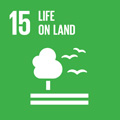- Docente: Maurizio Cattani
- Credits: 6
- SSD: L-ANT/01
- Language: Italian
- Teaching Mode: Traditional lectures
- Campus: Ravenna
-
Corso:
Second cycle degree programme (LM) in
History, preservation and enhancement of artistic and archaeological heritage and landscape (cod. 9218)
Also valid for Second cycle degree programme (LM) in History, preservation and enhancement of artistic and archaeological heritage and landscape (cod. 9218)
-
from Jan 27, 2025 to Feb 26, 2025
Learning outcomes
The course introduces students to Prehistory and Protohistory of Asia with particular reference to the evolution and adaptation keywords. At the end of the course students will acquire a basic information with updated bibliographic references on the formation of Arabian Civilization from early Holocene to the II mill. BC, the urbanization process of Middle Asia and the study of interaction between sedentary civilization and nomadic people in Central Asia.
Course contents
Lessons will focus on main characters of the evolution and adaptation of ancient communities, presenting case studies of specific regions, keypoint for the comprehension of ancient civilizations: Middle Asia, Arabian Peninsula, Indus Valley and related regions.
Following themes will be studied in depth:
- the formation of Arab Civilization from Early Holocene to the Bronze Age;
- introduction to the Indus Valley Civilization;
- Oxus Civilization between nomads and sedentary people;
- Economy and Cultural aspects in Central Asia and the origin of nomadism
Readings/Bibliography
Basic texts for the examination are:
Vidale M. 2010 Ad Oriente di Sumer. Archeologia dei primi stati euroasiatici, Carocci
and one of the following volumes:
Magee P. 2014, The Archaeology of Prehistoric Arabia. Adaptation and Social Formation from the Neolithic to the Iron Age, Cambridge University Press.
Kenoyer J. M. 2008, Indus Civilization, in Pearsall D. M. ed. Encyclopedia of Archaeology, Academic Press, New York.
Lamberg-Karlovsky C.C. 2013, The Oxus Civilization, CuPAUAM 39, 2013, pp. 21-63
Facchini F., a cura di, 2008, Popoli della yurta. Il Kazakhstan tra le origini e la modernità, Milano: Jaca Book.
Further texts will be added during the course lessons (single papers of recent editing), available with username and password at AMS Campus - AlmaDL - University of Bologna.
Teaching methods
Teaching methods will include lessons with powerpoint to be considered of primary importance for the comprehension of the discipline.
Assessment methods
For attending students: direct examination by the teacher. Non attending students are required to agree upon an alternative program with the teacher
During the lessons and in the final examination it will be evacuate the capability to understand general themes and to manage the bibliography, with particolar reference to the geographical environments. The mastery of appropriate language and the ability to present will be evaluated with highest consideration.
The unsuccessful knowledge of chronology, historical and geographical background, inappropriate language will be evaluated negatively.Teaching tools
Powerpoint presentations will be available at the web site of the teacher.
Students who require specific services and adaptations to teaching activities due to a disability or specific learning disorders (SLD), must first contact the appropriate office: https://site.unibo.it/studenti-con-disabilita-e-dsa/en/for-students .
Office hours
See the website of Maurizio Cattani
SDGs


This teaching activity contributes to the achievement of the Sustainable Development Goals of the UN 2030 Agenda.
